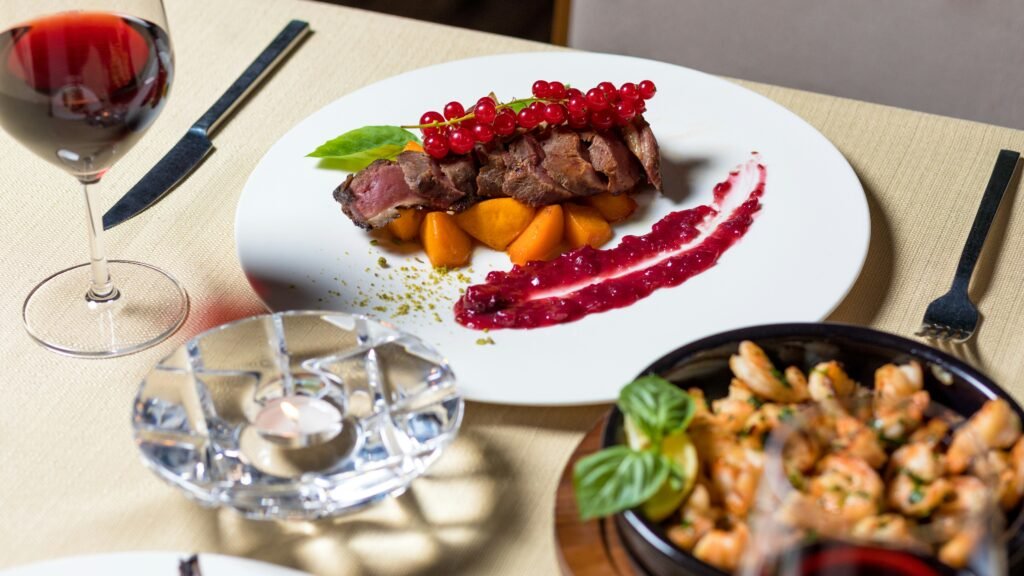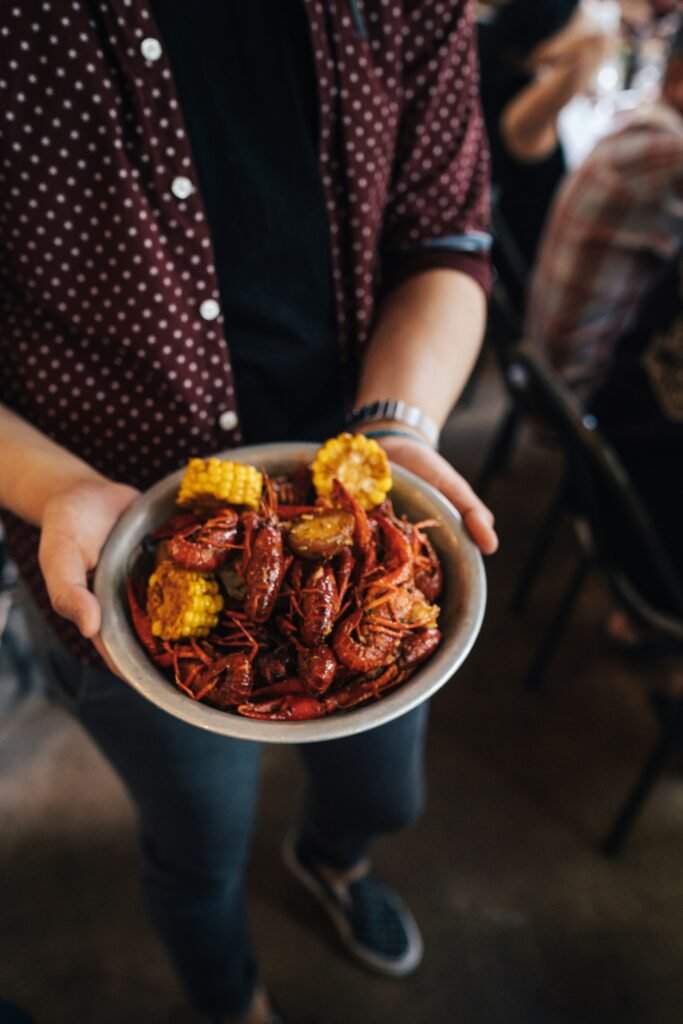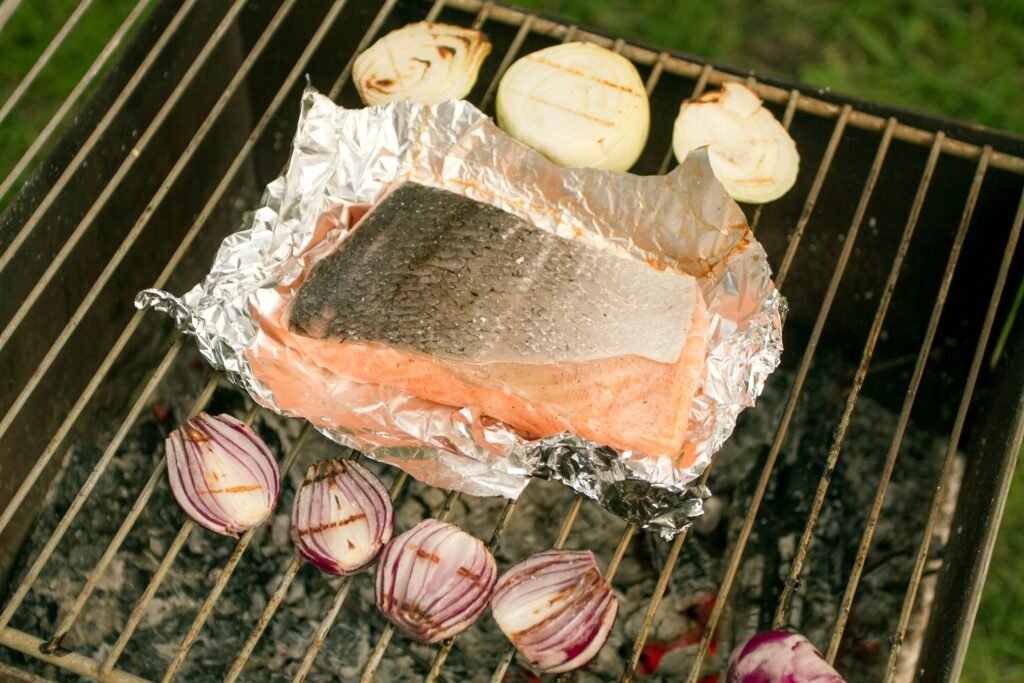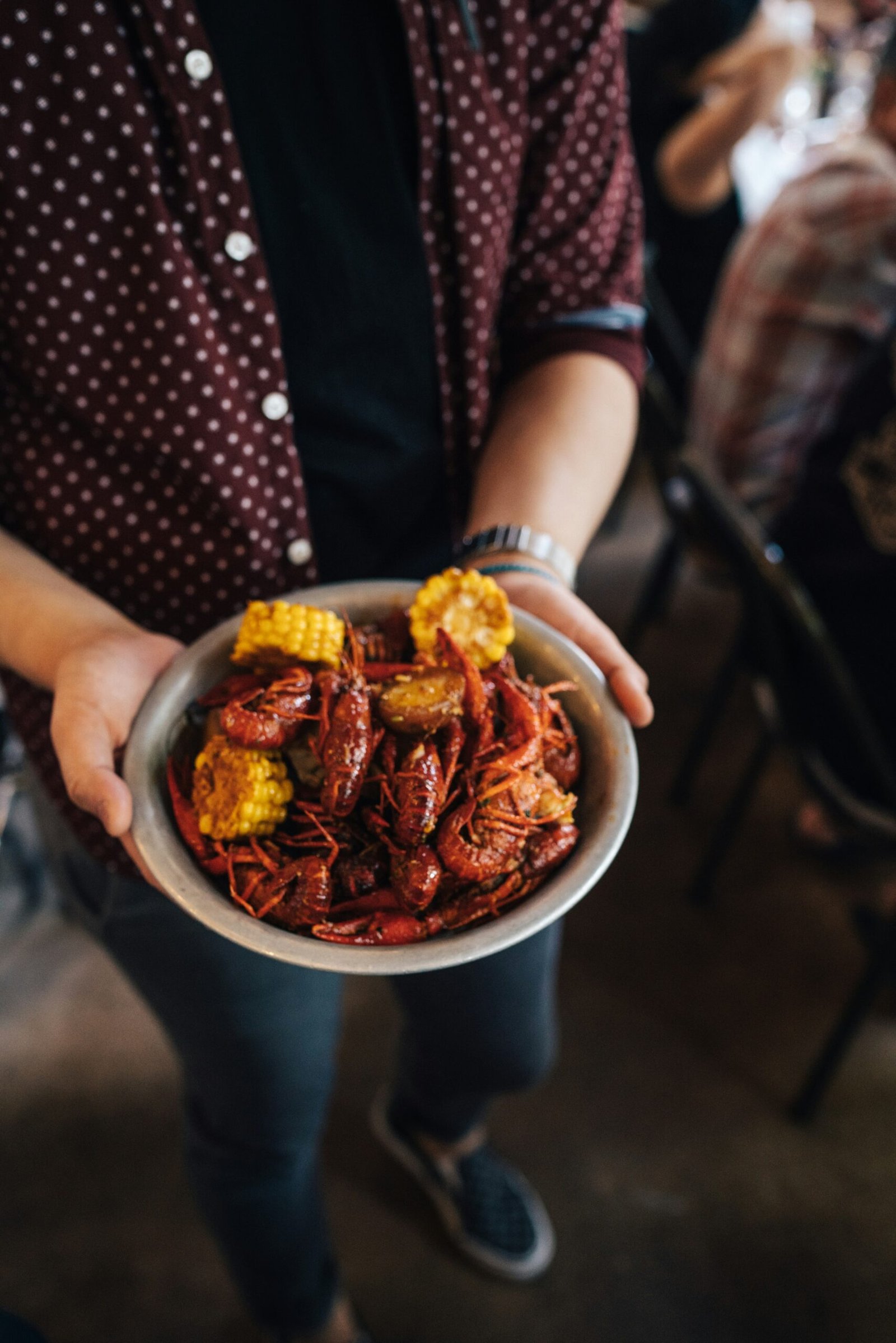If you’re a fan of grilled meat but want to take it up a notch, the question of how to infuse flavors might have crossed your mind. Whether you’re experimenting with new marinades or looking for innovative techniques, finding the perfect way to make those flavors really pop can be a game-changer. In this article, we’ll explore different methods to infuse flavors into your grilled meat, elevating your BBQ experience to a whole new level. Say goodbye to bland and hello to mouthwatering meals that will leave your taste buds longing for more. So, let’s dive in and discover the secrets to making your grilled meat explode with deliciousness.
Understanding the Basic Principles of Flavor Infusions
What Flavor Infusions Entails
Flavor infusion is the process of enhancing the taste of grilled meat by introducing additional flavors into it. It goes beyond the basic seasonings and spices that are typically applied to meat before grilling. By infusing flavors, you can elevate the taste and create a more complex and enjoyable dining experience.
Why Flavor Infusions is Important in Grilled Meat
Flavor infusion plays a crucial role in grilled meat because it adds depth, complexity, and a unique twist to your dish. While traditional seasonings can enhance the natural flavors of the meat, infusions take it a step further by introducing new and exciting taste profiles. It allows you to experiment with different flavors and create dishes that stand out from the crowd.
The Types of Flavors That Can be Infused into Grilled Meat
When it comes to flavor infusions, the possibilities are virtually limitless. You can choose from a wide range of ingredients, such as herbs, spices, fruits, vegetables, and even alcohol, to create unique flavor combinations. Some popular flavors used in meat infusions include garlic, rosemary, citrus, honey, soy sauce, bourbon, and many more. The key is to balance the flavors and experiment with different combinations to find what suits your taste buds best.
Choosing the Right Meat for Grilling
Characteristics of Good Meat for Grilling
To achieve optimal results in flavor infusion, it is essential to start with the right cut of meat. The ideal meat for grilling should have a good amount of fat marbling, as fat adds moisture and flavor to the meat. Look for cuts like ribeye, New York strip, or beef tenderloin for beef, chicken thighs for poultry, and fatty cuts like pork shoulder or ribs for pork. These cuts are known for their tenderness and ability to absorb flavors effectively.
Popular Meats Used for Grilling
There is a wide variety of meats you can choose from when it comes to grilling. Each type of meat offers its unique flavor and texture, which can be enhanced through infusion. Beef, pork, chicken, and fish are some of the most commonly grilled meats. Beef provides rich flavors, pork offers a balance of sweetness and smokiness, chicken can absorb a wide range of flavors, and fish provides a delicate and light taste. Consider your preferences and experiment with different meats to discover your favorites.
The Impact of Meat Quality on Flavor Infusion
The quality of meat used for grilling significantly influences the outcome of flavor infusion. Higher-quality meat tends to be more tender, flavorful, and juicy, making it an ideal canvas for infusing flavors. Opt for organic, grass-fed, or responsibly sourced meat whenever possible, as it is known to have superior taste and quality. Make sure to choose meat that is fresh and properly stored to ensure the best results in flavor infusion.

Selecting the Appropriate Flavors for Infusion
Common Flavors Used for Meat Infusion
Certain flavors have become staples in meat infusion due to their compatibility and ability to enhance the natural taste of the meat. Garlic, rosemary, and thyme are popular herbs used for infusions, as they provide a fragrant and savory profile. Spices like paprika, chili powder, and cumin add heat and depth to the meat. Additionally, complementary flavors such as citrus, honey, and balsamic vinegar can be used to balance the taste and create a harmonious blend of flavors.
Innovative Flavors for Grilled Meats
While traditional flavors are widely used and loved, there is always room for innovation when it comes to flavor infusion. Consider experimenting with unique combinations like ginger and sesame for an Asian-inspired twist, or chipotle and maple syrup for a smoky and sweet flavor profile. Don’t be afraid to think outside the box and try new flavors that excite your taste buds. The possibilities are endless, and you may stumble upon a combination that becomes your signature dish.
The Role of Taste Balance in Selecting Flavors
When selecting flavors for infusion, it is crucial to consider taste balance. Balancing the flavors ensures that no single taste overpowers the others, creating a harmonious and enjoyable eating experience. Consider the four primary taste profiles: sweet, salty, sour, and savory. Aim to incorporate a combination of these profiles in your flavor infusion to create a well-rounded dish. Experiment with varying levels of each taste and adjust according to your personal preferences.
Using Marinades to Infuse Flavor
The Role of Marinades in Flavor Infusion
Marinades are an excellent way to infuse flavors into meat while also tenderizing it. A marinade typically consists of a liquid base, such as oil, vinegar, or citrus juice, combined with herbs, spices, and other flavor enhancers. The meat is soaked in the marinade for a specific period, allowing it to absorb the flavors and become more tender. Marinades not only add flavor but also help retain moisture, resulting in juicy and flavorful grilled meat.
How to Create Your Own Marinade
Creating your marinade allows you to customize the flavors according to your preferences. Start with a base, such as olive oil, soy sauce, or yogurt, and add flavoring elements like minced garlic, chopped herbs, spices, and a hint of acidity from citrus juice or vinegar. Experiment with different combinations and adjust the quantities to achieve the desired taste. It is essential to balance the flavors and allow the meat to marinate for an adequate amount of time for the best results.
The Ideal Duration for Marinating Meat
The duration for marinating meat depends on the type and thickness of the cut. Thinner cuts like chicken breasts or fish fillets require a shorter marinating time, usually around 30 minutes to an hour. Thicker cuts like steaks or pork chops can be marinated for a few hours, up to overnight. However, it is essential not to over-marinate the meat, as prolonged exposure to acidic marinades can break down the fibers excessively, resulting in a mushy texture. Follow recipe guidelines or use your judgment to determine the appropriate marinating time.

Employing Rubs for Dry Flavor Infusion
The Basics of Dry Rubs
Dry rubs are a popular method of flavor infusion that involves coating the meat with a mix of herbs, spices, and other dry seasonings. Unlike marinades, dry rubs do not require a liquid component and rely solely on the seasonings to enhance the meat’s flavor. The rub is generously applied to the meat, creating a flavorful crust that develops during the grilling process.
Selecting Ingredients for Your Dry Rub
Creating your dry rub allows you to tailor the flavors to your liking. Start with a base of salt and pepper, and then add a combination of herbs, spices, and other seasonings. Some common ingredients used in dry rubs include paprika, cumin, chili powder, garlic powder, brown sugar, and dried herbs like thyme or rosemary. Experiment with different flavor profiles and adjust the quantities to achieve your desired taste.
How and When to Apply Dry Rub
To apply the dry rub, ensure that the meat’s surface is dry for better adhesion. Generously coat the meat, using your hands to massage the rub into the surface, allowing the flavors to penetrate. For optimal results, it is recommended to let the seasoned meat sit in the refrigerator for a few hours before grilling. This allows the flavors to meld and the meat to absorb the seasonings thoroughly.
Incorporating Brines and Injecting For Deeper Infusion
The Difference Between Brining and Marinading
While marinades involve soaking the meat in a liquid mixture, brining refers to immersing the meat in a saltwater solution. Brines are particularly effective in infusing flavors and enhancing the meat’s juiciness. The saltwater solution helps to break down the muscle fibers, allowing the meat to absorb more moisture and flavor during the grilling process.
How to Properly Brine Your Meat
To create a brine solution, dissolve salt and sugar in water, adding additional flavorings if desired. Submerge the meat in the brine, ensuring it is fully covered, and refrigerate for a specific period, depending on the size and type of meat. The recommended brining duration varies, but as a general rule, larger cuts require longer brining times. Once the brining process is complete, rinse the meat thoroughly to remove excess salt and pat it dry before seasoning or grilling.
Using Meat Injectors for Deep Flavor Infusion
For an even deeper infusion of flavors, meat injectors can be used in conjunction with brining or standalone. Meat injectors are specialized syringes that allow you to inject flavorful liquids, such as marinades, broths, or brines, directly into the meat. The injector pierces the meat, dispersing the liquid throughout its interior, resulting in enhanced taste and juiciness. When using a meat injector, it is essential to distribute the injections evenly to ensure consistent flavor infusion.

Using Smoking as a Flavorful Infusion Technique
Understanding the Smoking Process
Smoking is a popular flavor infusion technique that involves exposing the meat to smoke generated from burning wood chips or chunks. The wood’s smoke imparts a unique taste and aroma to the meat, enhancing its overall flavor profile. The process usually involves slow and indirect cooking at lower temperatures, allowing the meat to absorb the smoky flavors gradually.
Choosing the Right Wood for Smoking
The choice of wood used for smoking plays a significant role in flavor infusion. Different woods impart different flavors, ranging from mild and subtle to bold and robust. Mild woods like fruitwood (apple, cherry) provide a subtle sweetness, while medium woods like hickory or oak offer a well-rounded smoky flavor. For stronger and bolder tastes, consider using woods like mesquite or pecan. Experiment with various wood options to find the one that complements your meat and desired flavor profile.
The Relationship Between Smoking Time and Flavor Infusion
The length of smoking time affects the intensity of flavor infusion. The longer the meat is exposed to the smoke, the more robust the smoky flavors become. It is important to find the right balance and not over-smoke the meat, as an excessive amount of smoke can overpower the natural flavors and result in bitterness. Monitor the smoking process closely, and aim for a well-balanced combination of smoke and meat flavors.
The Role of Grilling Temperature in Flavor Infusion
Ideal Grilling Temperatures for Flavor Infusion
Grilling temperature plays a vital role in achieving optimal flavor infusion. For most meats, a medium-high heat ranging from 375°F to 450°F (190°C to 230°C) is recommended. This temperature range allows for proper browning and caramelization, which enhances the flavor and texture of the meat. However, it is important to adjust the temperature depending on the type of meat and desired doneness. Refer to specific recipes or grilling guides for temperature recommendations.
How Temperature Affects Flavor
Temperature directly impacts the chemical reactions that occur during grilling, which ultimately affect the flavor of the meat. Higher temperatures lead to faster browning and the development of desirable flavors, such as the Maillard reaction. On the other hand, lower temperatures allow for slower cooking, which can result in more tenderness and a milder taste. Understanding the impact of temperature on flavor allows you to adjust your grilling technique to achieve the desired results.
Regulating Grilling Temperatures
To ensure consistent and accurate grilling temperatures, it is recommended to use a reliable grill thermometer. A thermometer helps you monitor the internal temperature of the meat, allowing you to gauge its doneness and adjust the heat accordingly. Properly regulating the grilling temperature enhances the flavor infusion process by ensuring the meat is cooked to perfection, neither undercooked nor overcooked.
Grill Placement for Optimal Flavor Infusion
Understanding Direct and Indirect Heat
Grill placement refers to the arrangement of the heat source in relation to the meat. There are two primary methods: direct heat and indirect heat. Direct heat involves placing the meat directly over the heat source, allowing for quick and intense cooking. This method is suitable for thinner cuts or when a seared crust is desired. Indirect heat involves placing the meat away from the heat source, allowing for slower and more even cooking. This method is ideal for larger cuts or when a gentle heat is required for flavor infusion.
Choosing The Best Placement For Your Meat
The choice of grill placement depends on the type of meat and desired outcome. Thinner cuts like burgers or kebabs benefit from direct heat as it results in a nicely charred exterior. Thicker cuts, roasts, or whole poultry are best cooked using indirect heat to allow for even cooking and optimal flavor infusion. Consider the size and thickness of the meat, as well as the desired cooking technique, when determining the best placement for your meat.
The Impact of Grill Placements on Flavor Infusions
Grill placement directly affects flavor infusion by determining the cooking method and the heat’s intensity. Direct heat creates a more intense sear and caramelization, resulting in a bolder and more pronounced flavor. Indirect heat allows the meat to cook slowly and evenly, promoting tenderness and enabling the flavors to penetrate deeply. Choosing the appropriate grill placement ensures that the meat is cooked to perfection while maximizing the flavor infusion process.
Troubleshooting Impediments to Flavor Infusion
Dealing with Tough Cuts of Meat
Certain cuts of meat can be naturally tougher and less receptive to flavor infusion. To overcome this, consider using methods that help tenderize the meat, such as marinating or brining. Acidic marinades can break down the meat’s fibers, while brining helps to retain moisture, resulting in a more tender and flavorful outcome. Slow cooking techniques, like using indirect heat or a slow cooker, can also help transform tougher cuts into delicious and tender dishes.
Addressing Uneven Grilling
Uneven grilling can be a challenge when it comes to flavor infusion, as parts of the meat may become overcooked or undercooked. To address uneven cooking, ensure that the heat distribution on your grill is even. Use a two-zone fire setup, where one side of the grill is hotter (direct heat) and the other side is cooler (indirect heat). This allows you to move the meat to different zones, depending on its doneness and desired level of flavor infusion. Additionally, regular flipping and rotating of the meat during grilling can help promote more even cooking.
Rectifying Over-flavoring of Meat
In some cases, the flavors infused into the meat can become overpowering, resulting in an unpleasant taste. To rectify over-flavoring, consider diluting the flavors by adding plain, unseasoned meat to the dish. This will help balance out the intensity and allow the flavors to blend more harmoniously. Alternatively, you can serve the over-flavored meat with milder accompaniments, such as a light salad or a creamy sauce, to help counterbalance the strong flavors.
In conclusion, flavor infusion is a fundamental aspect of grilling meat. By understanding the basic principles, choosing the right meat, selecting appropriate flavors, and employing various techniques like marinades, rubs, brines, and smoking, you can transform ordinary grilled meat into a culinary masterpiece. Experiment with different combinations, techniques, and cooking temperatures to discover the flavors that suit your palate best. With practice and creativity, you can elevate your grill game and impress your friends and family with mouthwatering, flavor-infused dishes. Happy grilling!

